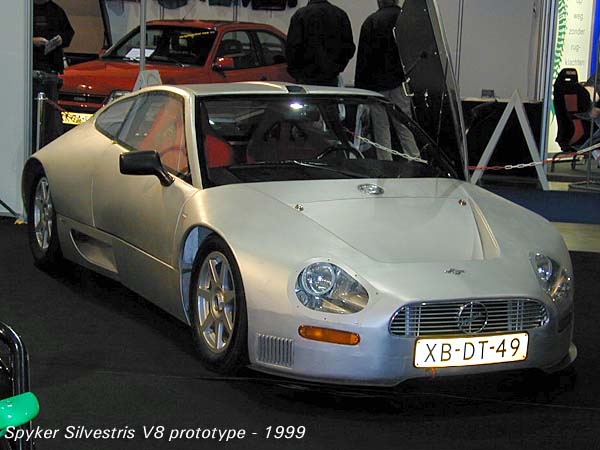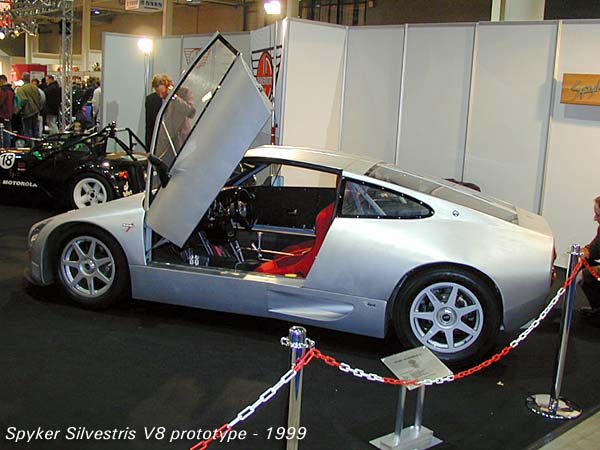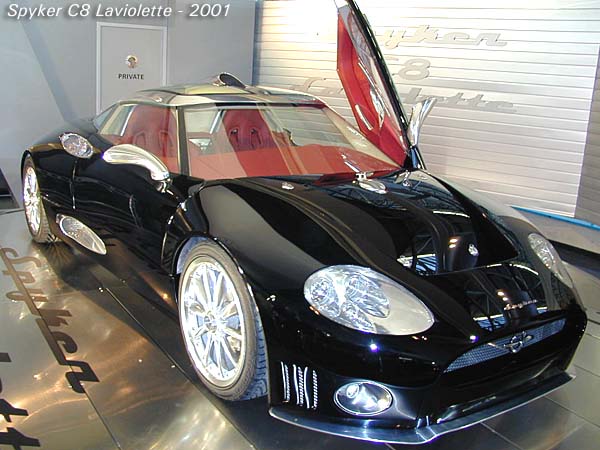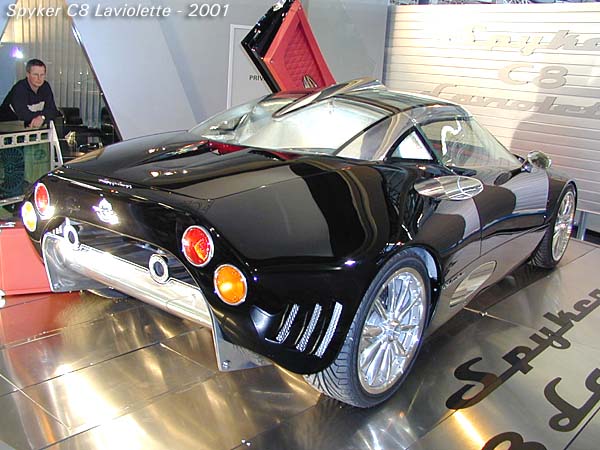|
 In
1999, 73 years after the demise of the Spyker factory, the famous name
reappeared on a car, much to everybody's surprise. A young Dutch town and
country planner by the name of Maarten de Bruijn, from a metal working and
inventors background, had designed and constructed a modern sports car. The
prototype, which he had built himself, was named Silvestris. His dream was to
start a small sportscar factory and for that he needed an appealing brand name,
one that attracted attention. In
1999, 73 years after the demise of the Spyker factory, the famous name
reappeared on a car, much to everybody's surprise. A young Dutch town and
country planner by the name of Maarten de Bruijn, from a metal working and
inventors background, had designed and constructed a modern sports car. The
prototype, which he had built himself, was named Silvestris. His dream was to
start a small sportscar factory and for that he needed an appealing brand name,
one that attracted attention.
The one he came up with was Spyker. He bought the rights to the name and the original logo etc. from the Dutch brand name registry and introduced his car as the Spyker Silvestris V8. His lightweight coupe was received very well and soon he found financial backing for further development into a production model.
 The
compact Silvestris weighed only 940 kg and was powered by an Audi V8, placed
behind the seats. This 3562
cc engine delivered 265 hp @ 5800 rpm and was connected to an Audi 5-speed close
ratio manual gearbox. Maximum speed was claimed to be about 250 kph and
acceleration from 0 to 100 kph could be done in 4.5 seconds. All impressive
figures. The
compact Silvestris weighed only 940 kg and was powered by an Audi V8, placed
behind the seats. This 3562
cc engine delivered 265 hp @ 5800 rpm and was connected to an Audi 5-speed close
ratio manual gearbox. Maximum speed was claimed to be about 250 kph and
acceleration from 0 to 100 kph could be done in 4.5 seconds. All impressive
figures.
Not only was the car fast, it also looked pretty good for a home grown design.
It measured 405 x 188 x 117 cm (length x width x height) and its body was formed
out of sheet metal by hand. Although not quite elegant it looked aggressive and
powerful.
The construction consisted out of a central monocoque with a simple tubular
frame attached to it in the front and the back. The monocoque was made from galvanized
sheet metal, just like the body, and the whole thing proved to be remarkable
rigid yet uncomplicated.
Strengthened by all the positive comments on the prototype and
with the backing of entrepreneur and car collector Victor Muller, Maarten went
on to realize his dream. Started as a one man operation the new Spyker company
was professionalized rapidly and more people and specialist firms became
involved. The Silvestris design ripened to a model ready for production.
 And
this is the result of all that hard work. The production version of the
Silvestris coupe was renamed to C8 Laviolette and introduced to the public at
the 2001 Amsterdam AutoRAI. The new name connects directly to the Spyker
heritage; C8 is a continuation of the last Spyker designation, the C4, where the
8 indicates the 8-cylinder engine. Laviolette was the Belgian engineer who was
responsible for many of the Spyker innovations and designs at the start of the
20th century, and is honored by naming this car after him. And
this is the result of all that hard work. The production version of the
Silvestris coupe was renamed to C8 Laviolette and introduced to the public at
the 2001 Amsterdam AutoRAI. The new name connects directly to the Spyker
heritage; C8 is a continuation of the last Spyker designation, the C4, where the
8 indicates the 8-cylinder engine. Laviolette was the Belgian engineer who was
responsible for many of the Spyker innovations and designs at the start of the
20th century, and is honored by naming this car after him.
It's amazing what some optic retouches can do for a car. Though it's still true
to its original design the car has changed from looking potent to a real
eye-catcher. The polished metal parts, the glass top, the more balanced
proportions in combination with the beautiful black paint job makes it look very
pleasing. Beyond the looks however it's quite a different car from the galvanized
sheet metal prototype: the C8 is a completely aluminum construction.
 The
rear of the C8 Laviolette shows the most differences from the prototype: the
roofline has now more of a hardtop style to it in contrast to the original coupe
shape. This is probably a result of making it more similar to the Spyder model
which was introduced first. The
rear of the C8 Laviolette shows the most differences from the prototype: the
roofline has now more of a hardtop style to it in contrast to the original coupe
shape. This is probably a result of making it more similar to the Spyder model
which was introduced first.
The original uncomplicated but effective monocoque construction has been
replaced by a more intricate state-of-the-art aluminum frame and panel
construction which is extremely rigid. On this frame the hand formed aluminum
body panels are fitted. The whole design is inspired by aircraft, in true Spyker
tradition.
Both length and width are identical to that of the prototype, but the height was
enlarged by 7.5 cm. to 124.5 cm. In spite of the aluminum construction the car
also gained some weight; it's now 1070 kg, 130 kg more than the prototype. The
C8 is still powered by an Audi V8, but now it's the aluminum 4172 cc unit from
the S8 and it can be ordered in different tuning levels. The most powerful Stage
II version turns out a massive 450 hp @ 7500 rpm, providing a top speed of over
300 kph. 0-100 kph acceleration is still done in 4,5 seconds. The manual 5-speed
transmission has been replaced by a sequential 6-speed gearbox. All in all it's
loaded with advanced technology, again in true Spyker tradition.
|
